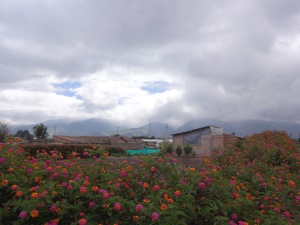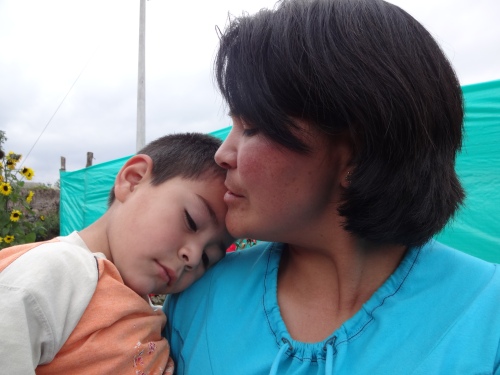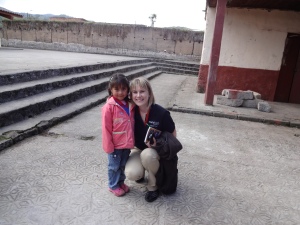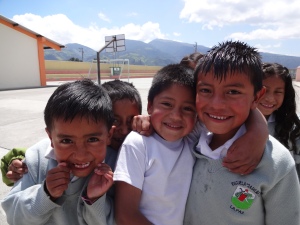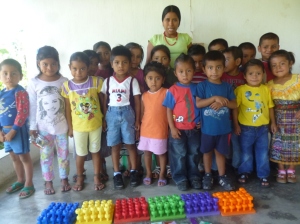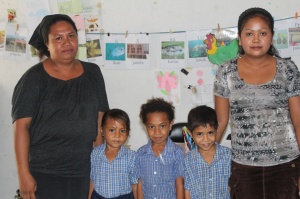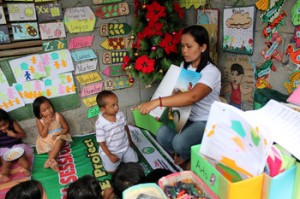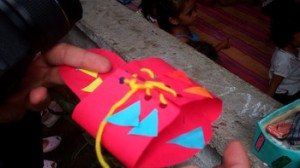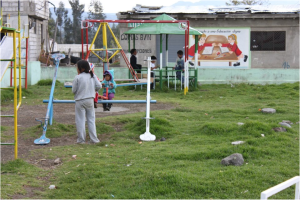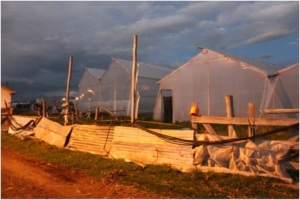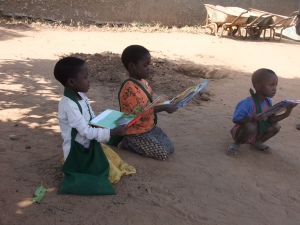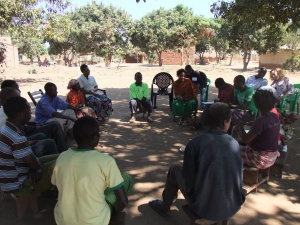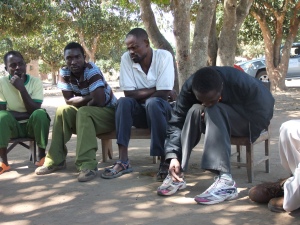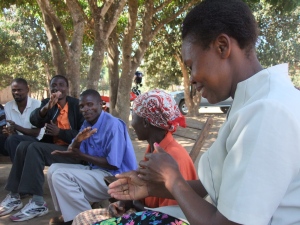By Joanne Hashim, ChildFund Indonesia
Many parents and teachers use things they have handy to teach lessons to children. Maybe you’ve glued macaroni onto paper or made figurines out of bread dough. Perhaps you’ve pressed flowers in a book. In eastern Indonesia, the same kind of thing happens every day.
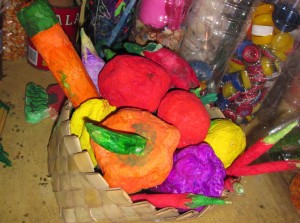
Fruit made from newspaper and paint.
At an early childhood development (ECD) center in Sumba, Indonesia, which is supported by ChildFund, tutor Kristina made model fruit out of old newspapers and paint, resources she had nearby, so she could show her pupils, children ages 5 and under, what fruits look like.
“None of these things are difficult to make,” she says. “They just take time, but you see around here, we have no choice. We cannot just talk all the time in class. Children need to be stimulated in their learning, and we need teaching aids that children are interested in and can relate to, so that they have a better understanding of the topic.”
The ECD center in Sumba focuses plenty of attention on creating educational tools with locally available resources.

Gadriana, head of the ECD center, with pupils.
“A popular game is snakes and ladders made from cardboard and old books,” says Gadriana, head of the center. “We also use big dice to teach numbers. This one is made from cardboard. The only cost is in the paint and plastic to protect them.” Every day, children are allowed to choose the game they want to play and with whom they wish to play. As many as 10 children will line up to play “throw,” which has game pieces made out of used newspaper and spare wood.

Children learn counting through the game of congkak.
“Children love this game,” says Gadriana. “It helps them judge distance and count. Children also love to play congkak, which is a traditional game of counting with the aim of filling the opponent’s pots. The one that we use is made from egg cartons and seeds.”
As children develop and get older, they need different educational resources.
“Each morning, before some of older children are allowed to play outside, they have to do two things,” says Margaretha, a tutor. “The first is to place pictures of themselves on sticks on the class attendance poster to indicate their attendance at school. The second is to pick up a folded paper from inside a small rattan holder. On each sheet is written a number, or a simple calculation. Each child has to either work out the calculation or sound out the answer before they go and play outside. For this activity, different colored seeds and sticks are used. Children learn to count by touching the objects as they count.
“Having this activity before school enables the teacher to engage and develop a bond with each child while providing direct one-on-one support to the child,” Margaretha notes. “It also provides the opportunity for children to work alone, with the teacher or in a group, as learning is seen as a communal activity. The other thing this activity does is provide structure and sense of routine to the day. With more than 30 children in each class, we have to manage children from the time they arrive.”
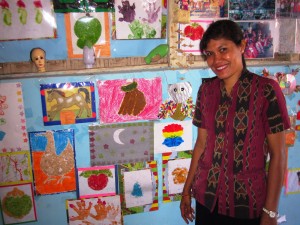
Kristina stands by a wall of her pupils’ artwork.
Children also are surrounded by numbers and shapes in the form of pictures. “These learning resources are cheap and easy to make, so teachers and children feel more comfortable about using these resources,” Kristina says, and they are kept where everyone has access to them. The children have to ask permission, but it is usually given. “With these resources, they get to play with a range of different educational toys, and we know that they are learning while enjoying being a child. I wish I had these when I was a child,” she notes.
To keep everyone engaged in the learning process, we are always “developing new toys and learning resources. We sometimes have help from parents, but mostly it is the tutors who are working together,” Gadriana says. “Currently, we are looking at developing math resources for older children that encourage them to work more by themselves over a period of time. We want them to extend their concentration more and develop their self-esteem. We want children to see that math can be fun.”

